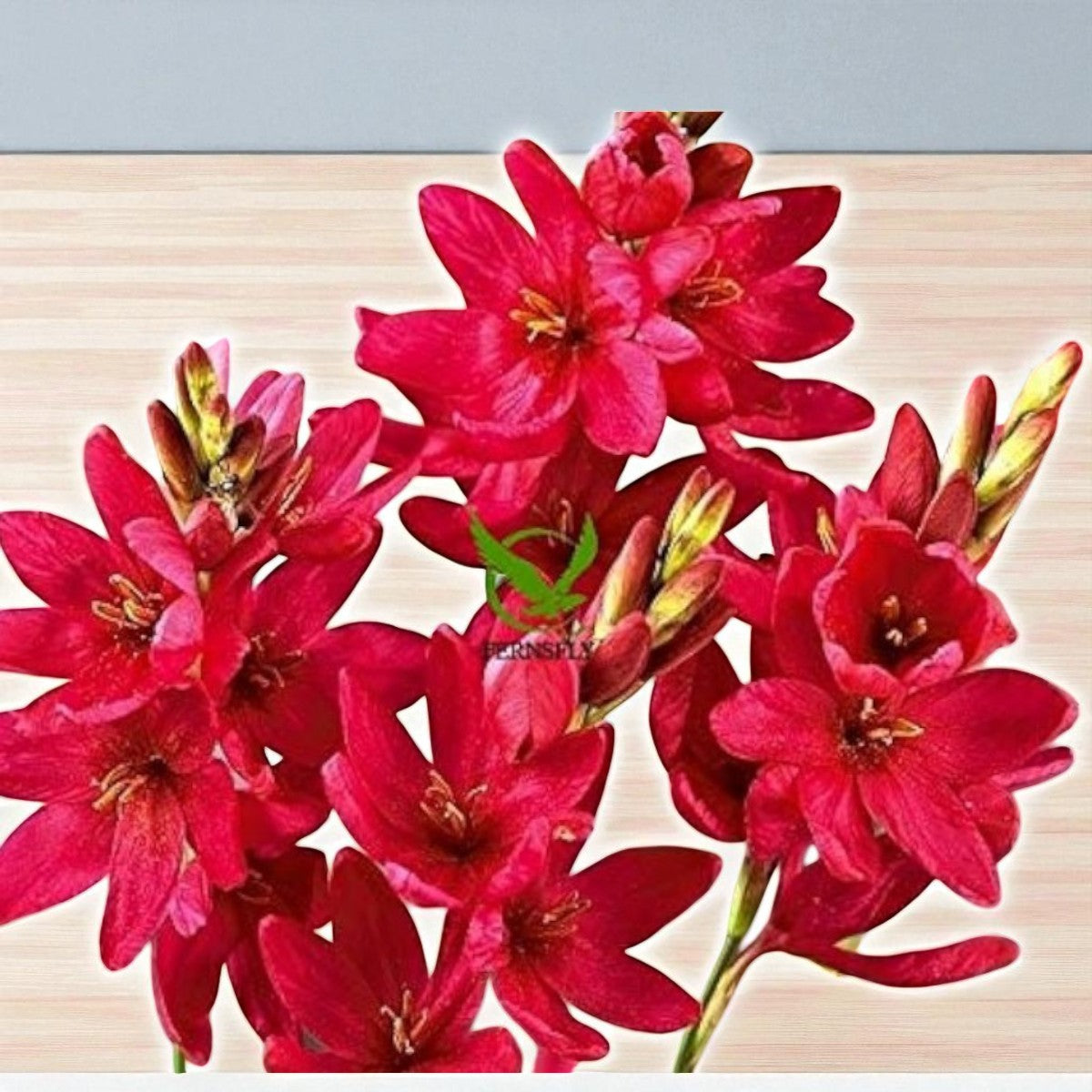
How to Grow and Care for Lucky Bamboo Plant | Meaning, Benefits & Complete Guide (Dracaena Sanderiana)
Introduction
If you’re looking for an indoor plant that’s easy to grow, visually appealing, and believed to bring good energy, the lucky bamboo plant is a great choice. The lucky bamboo plant (though not a true bamboo) is a versatile houseplant that works for beginners and seasoned plant lovers alike. In this post we’ll explore everything from lucky bamboo care, how to grow lucky bamboo, growing it in water versus soil, understanding its meaning and benefits, and key garden hacks for keeping it lush.
What is Lucky Bamboo (Dracaena sanderiana)
The plant commonly called lucky bamboo is actually a member of the genus Dracaena. It’s not true bamboo.
It’s marketed widely as a decorative indoor plant and often featured in Feng Shui arrangements. Because of its resilience and forgiving nature it’s especially suited for homes and offices.
Why People Love Lucky Bamboo: Meaning, Feng Shui & Benefits
-
The lucky bamboo meaning is rooted in the idea of good fortune, prosperity, health and balance.
-
In Feng Shui practice, the number of stalks in an arrangement often carries symbolic meaning: e.g., 2 stalks for love & partnerships, 3 for happiness & longevity, 5 for health & balance.
-
The plant is popular as an indoor plant for good luck, often gifted.
-
The lucky bamboo benefits include its low maintenance nature, its visual appeal, and its suitability for spaces with indirect light or modest care regimes.
How to Grow Lucky Bamboo: Step-by-Step
Let’s dive into the practical side — how to grow lucky bamboo and give it the best start.
Growing mediums: In water vs In soil
In water: One of the most common ways. Use a glass vase or decorative container, add pebbles or marbles to anchor the stalks, and ensure the roots are submerged in water. The water should be clean, replaced regularly, and free from harsh chemicals.
In soil: Use a well-draining potting mix (equal parts garden soil, sand/pebbles, peat/cocopeat). Make sure the pot has drainage holes. Keep the soil slightly moist (not soggy).
Which is better? Many growers prefer soil for longevity, but water-grown plants are very popular for aesthetic arrangements and ease. According to one source: “grows better in soil than in water” though both are fine.
Light Requirements
-
The lucky bamboo light requirements call for bright, indirect light. Avoid direct sunlight, which can scorch leaves.
-
It tolerates lower light than many houseplants, but too low light → weak growth, pale leaves.
-
Tip: Place near an east- or north-facing window, or where morning light filters in.
Watering & Humidity
-
If grown in water: keep roots submerged, change the water every 7-10 days to prevent algae or rot. Use filtered/distilled water or let tap water sit out 24 hrs for chlorine to dissipate.
-
If grown in soil: keep top inch of soil slightly dry before watering — don’t let it stay soggy.
-
Temperature: Ideal range ~ 18-30 °C (65-85 °F). Avoid cold drafts or AC vents.
-
Humidity is moderate; misting occasionally helps if your indoor air is dry.
Fertilizer & Nutrients
-
Because many arrangements are water-grown, the nutrient supply is minimal. Use a very weak liquid houseplant fertilizer every couple of months (¼ strength) or specialty lucky bamboo fertilizer. Over-fertilizing can cause trouble.
-
If soil-grown, you can feed more often (once every 4-6 weeks) but always weak.
Pruning, Maintenance & Propagation
-
Trim away yellow leaves or stems; keep things tidy.
-
To promote branching: cut the main stalk about an inch above a node — new shoots may emerge.
-
Propagation: Use healthy parent stalks, cut offshoots with at least one node, root them in water (or soil) to create new plants.
-
Repotting or changing container: if roots are crowded, or water-vase is too small, move to a larger container.
Training & Decorative Shapes
-
One hallmark of lucky bamboo is its spiral or braided shapes. You can train stalks by rotating the container toward light, using a box to control light direction, or gently braiding the stalks.
-
Use decorative pebbles, coloured stones, glass beads, etc for aesthetics.
Common Problems, Diagnoses & Solutions
Even the hardy lucky bamboo plant may encounter issues. Here’s a guide to why is my lucky bamboo turning yellow?, browning tips, leggy growth and other signs.
-
Yellowing leaves or stalks: could be overwatering (in soil), stale water (in water-grown), too much fertilizer, chlorine/fluoride in water, direct sun, temperature stress.
-
Browning leaf tips: often due to low humidity or poor water quality.
-
Leggy growth / stretching: low light → plant reaches toward light source, becomes thin. Increase light.
-
Rotting stalks/roots: water left un-changed, algae/bacteria buildup, or soggy soil with poor drainage. Clean container, change water or repot.
-
Pest infestations: though hardy, common pests include spider mites, mealybugs. Treat with mild soap, neem oil, remove infected parts.
Placement & Styling Tips (Indoor Plant for Good Luck)
-
Position your lucky bamboo in a spot with indirect light—avoid direct midday sun.
-
According to Vastu/Feng Shui: placing it in the east or southeast zones of your home may attract health, family happiness or wealth.
-
Use decorative containers with stones or pebbles; these help with stability and aesthetic.
-
For water-grown arrangements: change the water weekly, clean the container monthly, refresh pebbles if needed.
-
Rotate the plant occasionally so all sides get light and growth remains even.
Garden Hacks & Smart Care Tips for Beginners
-
Use distilled or rain water whenever possible to avoid chemical build-up.
-
When growing in water, put a marker line on the container to monitor water level. If below that, top up to keep roots submerged.
-
Clean decorative stones/pebbles and container occasionally to prevent algae and bacteria.
-
Use very dilute fertilizer — too much will burn the roots. Less is more.
-
If you notice yellowing stalks: act early. Once a stalk turns yellow from the bottom up it may not recover; better to cut off and propagate fresh.
-
Rotate the pot/container every few weeks so the plant grows upright rather than leaning.
-
Use a pebble-tray or group with other plants if humidity is low in your indoor space.
-
For spiral/braided designs: you can shape the stalks by controlling light direction (rotate container), or purchase ready-trained designs.
-
Keep away from direct cold drafts or heat vents — stable temperature helps.
Frequently Asked Questions (FAQ)
Q. Is lucky bamboo hard to keep alive?
Not really. It’s considered one of the easier indoor plants to care for. With correct water or soil medium, appropriate light, and minimal fertilizer, it thrives.
Q. Can I use any tap water?
Tap water often has chlorine, fluoride or salts that can harm the plant over time (brown tips, yellowing). Leaving it out for 24 hrs or using filtered/distilled water is best.
Q. How often should I change the water if grown in water?
Every 7-10 days is a good rule of thumb; monthly cleaning is also advised.
Q. How many stalks should I have for feng shui?
Depends on your intention: e.g., 3 for happiness, 5 for health, etc. Many sources list these numbers.
Q. Is the plant pet-safe?
It is mildly toxic to pets (as a Dracaena species), so keep away from cats/dogs if they may chew on it.
Conclusion
The lucky bamboo plant is truly one of the more forgiving, elegant indoor plants you’ll find. With the right light, correct water or soil medium, and a few minutes of maintenance now and then, you’ll enjoy its lush green beauty and good-luck symbolism for years. Whether you’re using it as a decor piece, a gift, or just to bring a touch of zen to your space, following the above lucky bamboo care guidelines will set you up for success.
Remember: bright indirect light, clean water (or well-drained soil), minimal fertilizer, and a stable environment are the keys. And don’t forget the meaning behind it — a plant that not only looks good, but feels good.
-
How to take care of lucky bamboo in water at home
-
Step-by-step guide to growing lucky bamboo in soil
-
Best place to keep lucky bamboo for positive energy
-
Why is my lucky bamboo turning yellow? Solutions you need
-
Lucky bamboo Vastu directions for good luck and prosperity
-
Common mistakes in lucky bamboo care (and how to avoid them)
-
Lucky bamboo benefits for home and office décor
-
How often should you change lucky bamboo water?
-
Indoor plants for good luck: is lucky bamboo really one of them?

